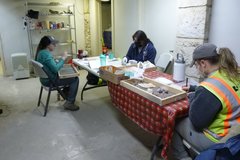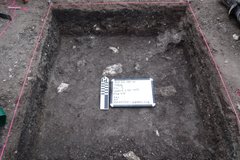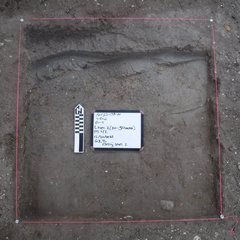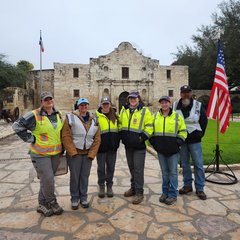Week four was a truncated week for the archaeologists, due to rain and the holidays.
Rain on Monday allowed archaeologists to catch-up on necessary lab work (Figure 1). Processing of artifacts includes cleaning, sorting, and cataloging. While the excavations have not yielded an abundance of unique artifacts, there have been several small and unidentifiable fragments of metal, some Spanish Colonial ceramics, a few fragments of glass, and pieces of construction debris, such as mortar and brick. After artifacts are processed and documented, they are saved for curation, which occurs at the end of the project.
Tuesday and Wednesday archaeologists were back to excavations in units 3 and 4. In EU-3 archaeologists continued to dig through intact soils. A soil change was noted around 30-40 cmbd (Figure 2). This matrix was a clay loam with a higher sand versus clay density and patches of “lime slurry.” This lime slurry may have been a component of a past flooring episode. A sample of this lime slurry was taken for further research. Due to the mottling nature of this level, if the lime slurry was from a floor it was disturbed in the past. Fox et al. (1976) also suggested previous floors had been demolished prior to their excavations in the 1970s. This unit has reached a depth of 50 cm below datum.






